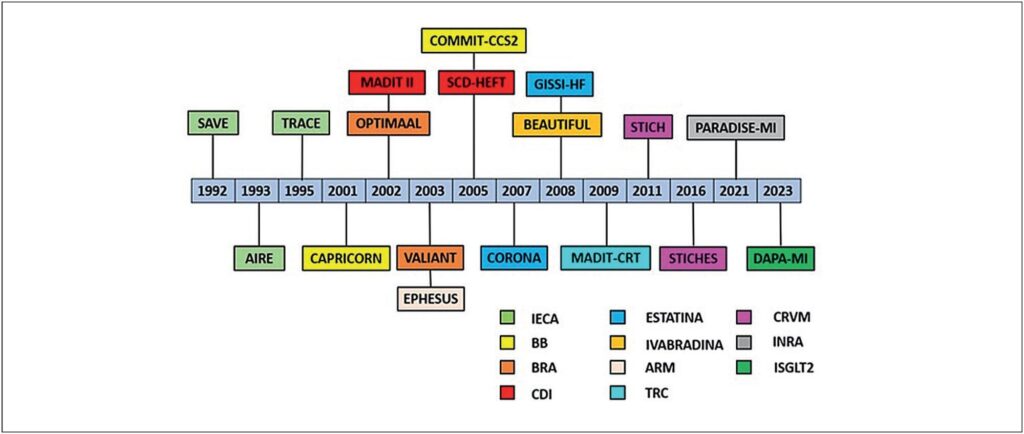ABC Heart Fail Cardiomyop 2023; 3(2): e20230086
Heart Failure After Acute Myocardial Infarction: A New Phenotype of Acute Heart Failure?
Pathophysiology
Over the last few decades, much has been discovered about the pathophysiological processes of chronic HF, especially myocardial remodeling, signaling important pharmacological targets that have proven to impact clinical outcomes. In the scenario of post-infarction HF, some peculiarities in these processes have been better understood, helping to understand specific characteristics of this clinical phenotype of HF and enabling a more targeted approach in this scenario.
Initially, ischemia leads to loss of contractile function and consequently enlarges the ventricular cavity, which culminates in increased filling pressures and oxygen demand. Over time, cardiac work increases in an attempt to compensate for the increased pre- and post-load (due to all the hyperactivity of the sympathetic nervous system and the renin-angiotensin-aldosterone system), in addition, pressure overloads and volume induce molecular pathways that determine ventricular hypertrophy, without an adequate proportion of myocardial thickness and volume, without concomitant adequate vascularization and with the emergence of fibrosis (resulting from the deposition of excess collagen in the extracellular matrix).,
[…]
723


